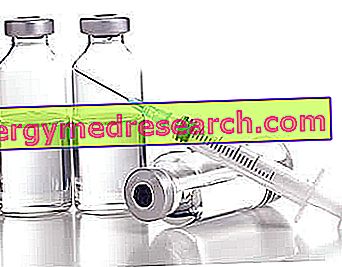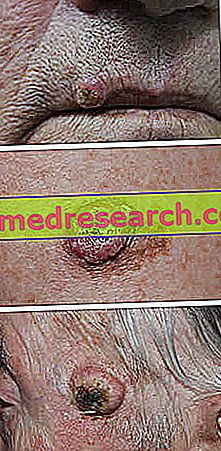Generality
Thrombolytic drugs (also called thrombolytic or fibrinolytic agents ) are medicines that are used in all those cardiovascular diseases that occur due to the formation and detachment of thrombi.

Indications
For what it uses
As mentioned - unlike what happens for anticoagulants and antiplatelet drugs, which are administered to prevent thrombus formation - thrombolytic agents are used in all those conditions in which the thrombus has already formed.
Therefore, the use of thrombolytic drugs is for example indicated in the case of:
- acute myocardial infarction
- pulmonary embolism
- deep vein thrombosis
- arterial thrombosis
- retinal thrombosis
- coronary embolism
Action mechanism
Although there are different types of thrombolytic drugs, the mechanism of action with which most of these active ingredients degrade the pathological thrombi is the same.
More in detail, fibrinolytic drugs favor the conversion of plasminogen to plasmin. The latter is a protease, whose task is to digest and degrade fibrin, including that which makes up the thrombus skeleton.
Classification
Basically, thrombolytic drugs can be subdivided into first, second and third generation agents.
First generation thrombolytic agents
Active ingredients such as: belong to the first generation of thrombolytic drugs
- Streptokinase (or streptokinase): streptokinase is a protein that is obtained from cultures of β-hemolytic streptococci of group C. This protein is able to bind to plasminogen, forming a complex with it and converting it to plasmin.
Moreover, the aforementioned complex not only allows the degradation of the fibrin contained in the thrombus, but is also able to catalyze the destruction of fibrinogen and coagulation factors V and VII.
For this reason, streptokinase is considered a non-fibrin-specific thrombolytic drug. In addition to this, since it is a protein foreign to the body, its administration can trigger allergic reactions. Furthermore, in some cases, individuals who have contracted streptococcal infections during their life have antibodies that are also active against streptokinase, which lead to its inactivation.
For this reason, nowadays, the use of streptokinase is now abandoned in favor of more selective and effective drugs.
- Urokinase (or urokinase): urokinase is a protein of human origin that exerts its action with a slightly different mechanism of action than that of other thrombolytic drugs. In fact, this protein is able to degrade both fibrin and fibrinogen, thus exerting a direct fibrinolytic action.
This molecule has the advantage of being of human origin, therefore, the organism does not recognize it as a foreign agent. Not by chance, urokinase was used above all in those patients who had hypersensitivity towards streptokinase.
However, also urokinase has some limitations, such as the high cost and its non selectivity for fibrin.
Second generation thrombolytic agents
The altiplasi belongs to this category. This molecule is a human tissue plasminogen activator (t-PA), obtained with recombinant DNA techniques.
The task of the tissue plasminogen activator within our body is precisely to convert plasminogen to plasmin.
Alteplase has the advantage of possessing a high affinity for plasminogen bound to fibrin in thrombi and a lower affinity for free plasminogen (unlike what happens for first-generation fibrinolytics); for this reason, the platelet is considered a fibrin-specific thrombolytic drug.
However, at therapeutic concentrations, the high-cleft is still able to convert even free plasminogen to plasmin and its half-life is decidedly short (indicatively, about five minutes).
Third generation thrombolytic agents
Third-generation thrombolytic drugs derive from structural modifications of the tissue plasminogen activator.
Reteplase and tenecteplase belong to this category, both obtained through modifications of the structure of the hempase.
More specifically, the reteplase has been deprived of a part of the amino acids that are present in the hempase; while to obtain tenecteplase - through genetic engineering techniques - changes have been made in the amino acid sequence of the protein.
Compared to second-generation fibrinolytics, third-generation thrombolytic drugs have a greater half-life.
Side effects
The main side effects of thrombolytic drugs are related to their ability to degrade not only the pathological thrombi, but also the physiological clots, thus exposing the patient to the risk of experiencing bleeding.



